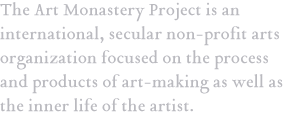Links for August 29th 2010
- “a non profit organization that is concerned with the current engagement between monastic culture, spirituality and contemporary society,”
- “an attempt to offer a facility for the on-going dialogue between monastic spirituality, society, culture and church, and to begin to ask serious questions concerning the relationship between Secular Monasticism, Church and society, both historically and contemporarily. Monos also provides a facility for individuals and groups to explore monastic spirituality in terms of a lived Christian experience.” Offers retreats.
- “A scholarly resource for the study of women’s religious communities from 400 to 1600 CE”
A History of Monastic Spirituality
- from a Benedictine perspective, gives a primarily western account, but includes a pre-history and discussion of eastern traditions
- A discussion of the some of the elements of monasticism
- [Separateness] “The first thing that stands out is that these various forms of para-Christian monastic life have a tendency to set themselves apart, to separate themselves from the world in isolation from the rest of men. This isolation often has an exterior sign, a wall, a reserved enclosure, access to certain buildings being reserved to the ascetics. Yet frequently they insist rather on the cloister of the heart.”
- [Celibacy, Renunciation] “We also find ascetic practices such as celibacy, at least temporarily, and poverty understood as detachment. These practices are meant to encourage interior vigilance.”
- [Spirituality] “Finally, the third essential element: mystical aspiration that is to say a profound sense of the Absolute and a desire for communion with this absolute reality. This is perhaps the deepest foundation of the monastic life, for it is the source of a keen awareness of the radical insufficiency of this changing world. It is the driving power of the two other elements: separation from the world and ascetic practices.”
- “While the Oblate does not take vows and is not bound to take up new religious practices, being a Benedictine Oblate brings about a very real, living relationship with the monastery of oblation. It will always involve a sharing in prayer with the community and usually entails more practical assistance in one way or another. The Oblate will seek to live a life that is marked by a certain balance of prayer and work, a striving for peace and a commitment to others in charity. It is a call to holiness and to witness to Christ by word and example as a member of a particular monastic family.”
Leave a Reply
You must be logged in to post a comment.




